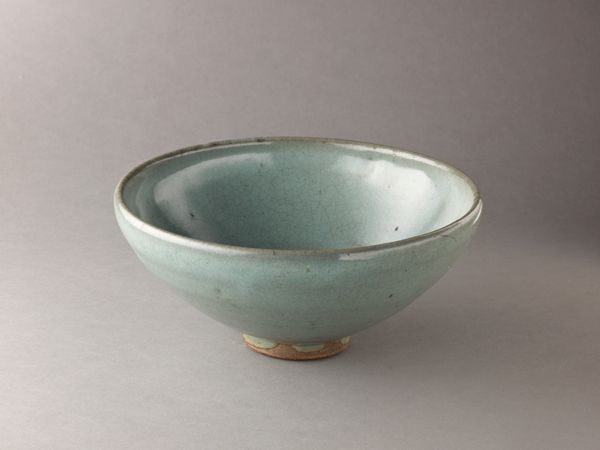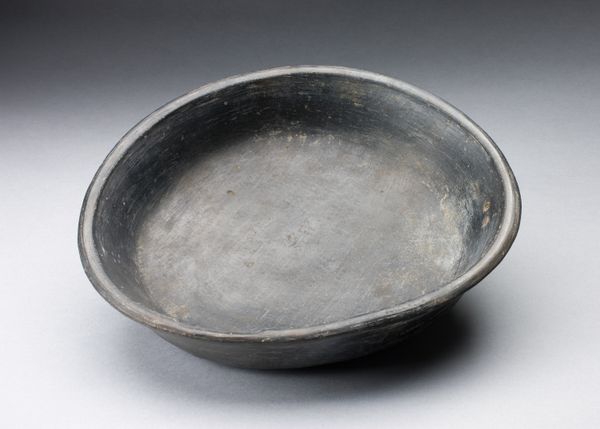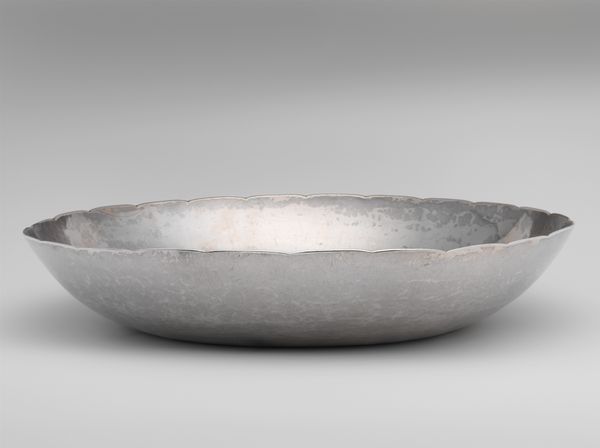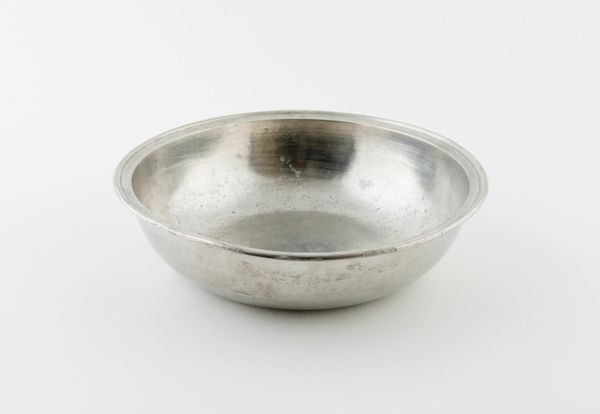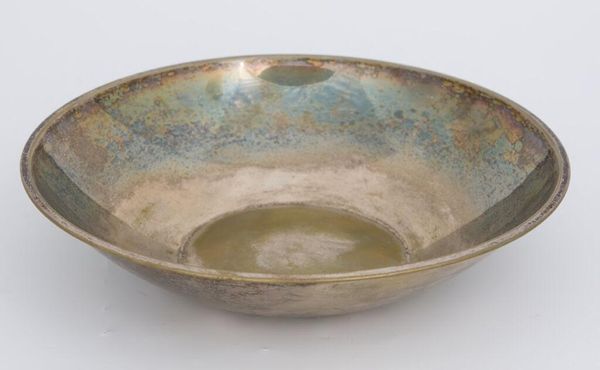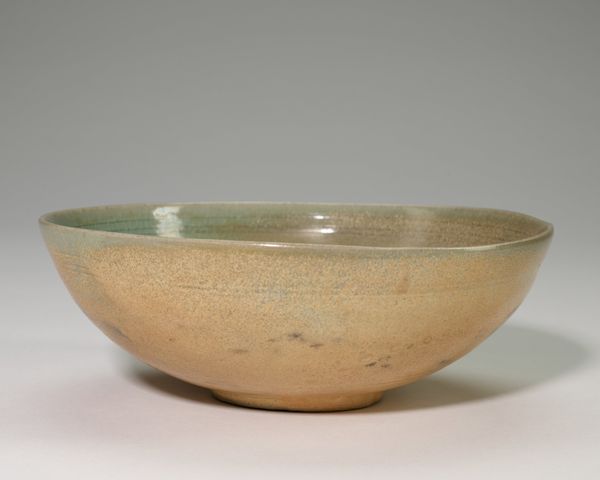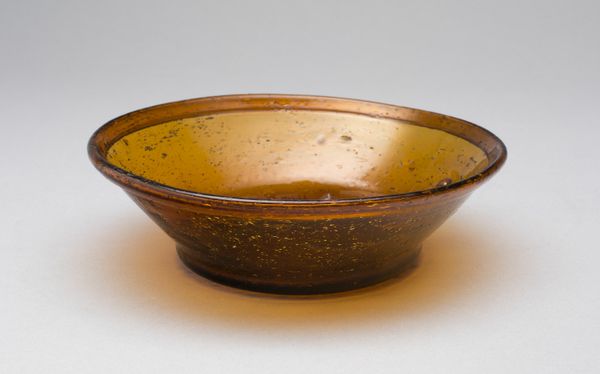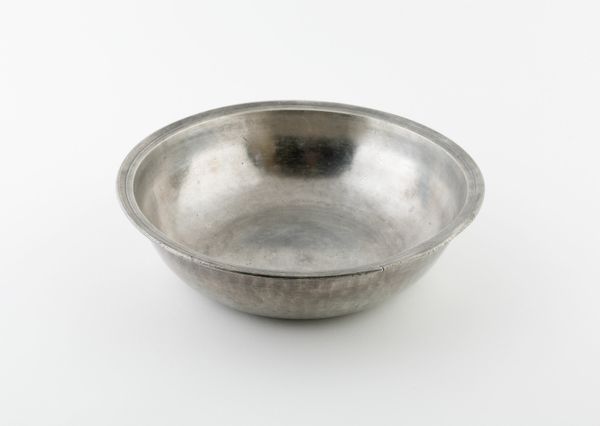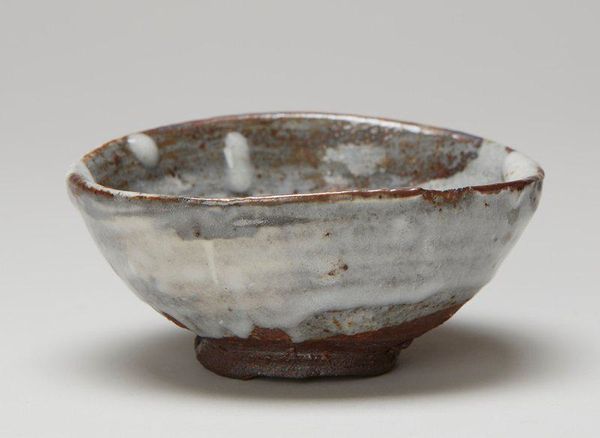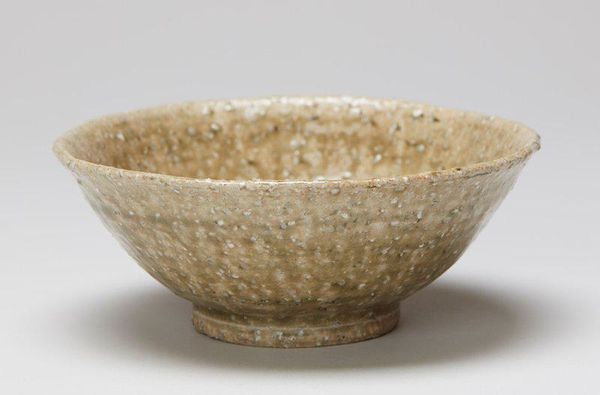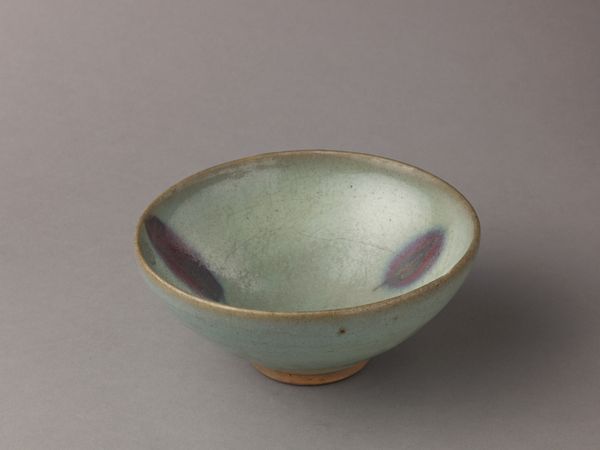
ceramic, earthenware
#
medieval
#
asian-art
#
ceramic
#
earthenware
#
ceramic
#
decorative-art
Dimensions: 2 7/8 × 7 5/8 × 7 1/2 in. (7.3 × 19.37 × 19.05 cm)
Copyright: Public Domain
Editor: Here we have an earthenware bowl, its chrysanthemums dating from the late 14th century. The anonymous artist, the form, glaze, and the repetitive, yet restrained, design creates a calm and contemplative feel. How do you interpret this work? Curator: Primarily, I am struck by the way the artist uses a very limited visual vocabulary to achieve such a powerful aesthetic effect. The simplicity of the bowl's form—its clean lines, its smooth curve—provides the foundation. The faint double-line incision near the rim and the nearly translucent glaze create a field across which the lightly carved floral motifs float. Editor: What effect do the floral motifs have on the work as a whole? Curator: The abstracted chrysanthemum pattern introduces subtle rhythmic complexity. If the placement of the flowers were any different, or were there even just one more, it would feel altogether like a different work. And note the craquelure – it is not distracting but integral, even enhancing the decorative appeal. It reveals the way the material has moved through time and gives a sense of both refinement and a pleasing visual imperfection. Editor: That's fascinating. I hadn't considered how those surface effects contribute to the design as much as the design itself. Curator: Exactly. It invites questions about process and craftsmanship. Every crack in the glaze carries with it a world of inference! The visual harmony and refinement shows the meticulous care by the potter. It is both utilitarian and decorative – something to be used, yet enjoyed for its aesthetic beauty. Editor: I see now how looking closely at the design and materials can reveal so much about the artist’s choices and their impact on the artwork's aesthetic value. Thank you for sharing your expertise with me.
Comments
No comments
Be the first to comment and join the conversation on the ultimate creative platform.
